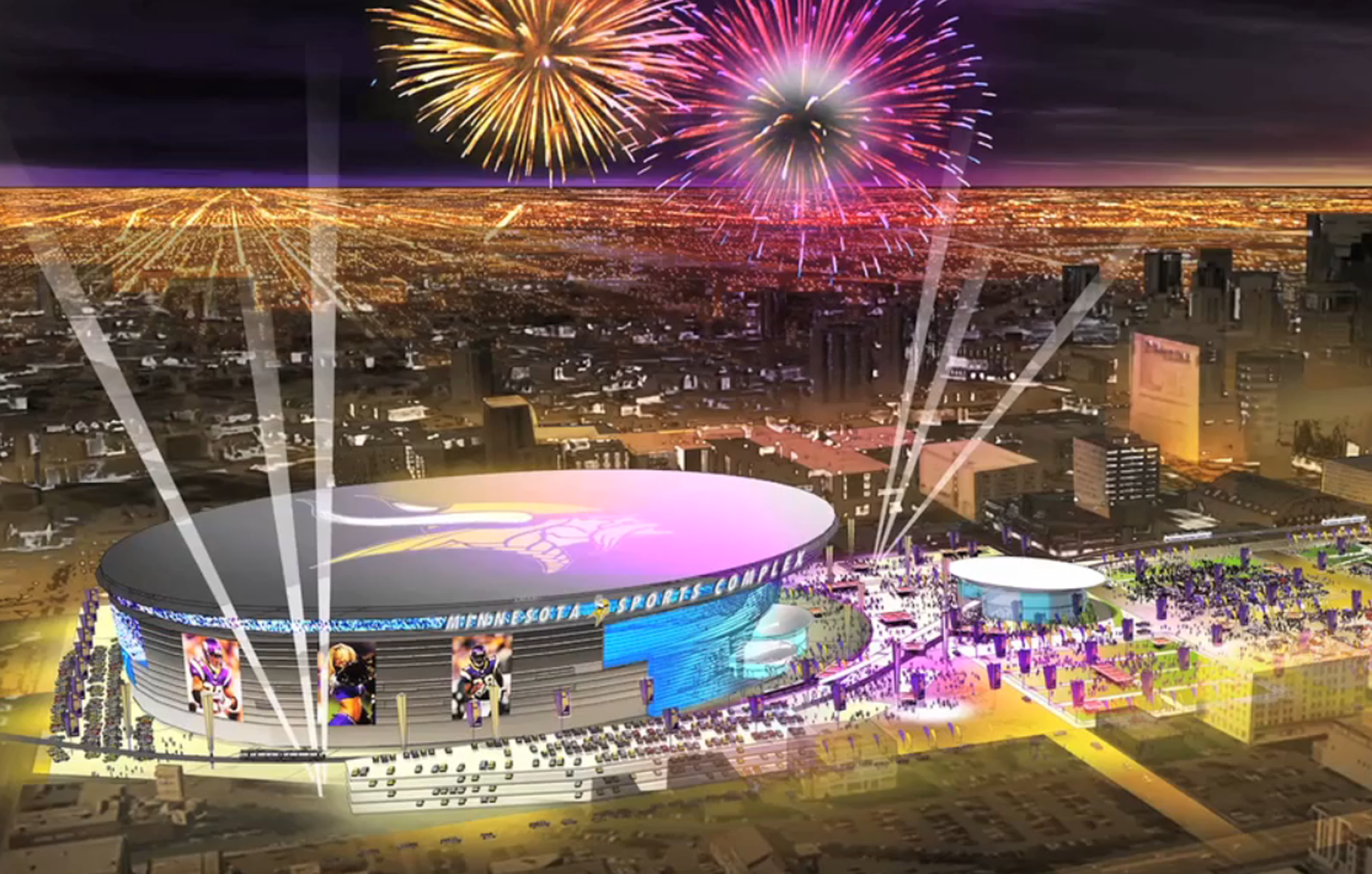Roger Goodell, the commissioner of the National Football League, flexed his commissioning muscle when he arrived at the Minnesota state capital last Friday. The move by Goodell left Minnesota the chance to determine the future of the Vikings before he enforced a change.
While there have been numerous whispers of relocation, Goodell’s visit resurrected the Vikings stadium plan and sparked a gain in political steam. On Tuesday the stadium plan passed through a second Senate panel, with a unanimous vote.
Only a week ago the bill was left for dead, but the Senate is now headed for a floor vote approving or denying a public subsidy package.
For the stadium plan to be passed, legislators do not simply need to approve paying for half of the 1 billion dollar stadium. Because Minneapolis will be receiving the alleged economic benefit from the stadium, St. Paul feels the need to get supplementation through state assistance as well.
“We absolutely believe there has to be parity,” St. Paul Mayor Chris Coleman said.
In Tuesday’s Senate Panel, language was inserted to provide Target Center in Minneapolis tax relief. St. Paul wants to see 43 million dollars allotted in debt relief for the St. Paul River Centre and for the Xcel Energy Center.
A previous attempt to sweeten the pot for St. Paul in order to gain legislators’ votes was a 27 milliond dollar subsidy for a new St. Paul Saints stadium in the capitol. The Viking’s stadium legislation now calls for St. Paul to receive 1.3 million dollars annually for the next twenty years. This 26 million dollars will be used “for the operating or capital costs of existing or new sports facilities.”
Under the current proposal, the Vikings would contribute 427 million dollars to the stadium, the state would contribute 398 million and Minneapolis would add 150 million. The team would also add 327 million dollars to the stadium’s operating costs over time and the city would contribute another 189 million.
The argument becomes: should the government subsidize a private business in an effort to make that business more profitable?
Many businesses in Minneapolis could become improved with technological improvements. If a pizza shop was given financial subsidization so they could purchase jet packs for pizza delivery, that pizza shop would likely become more efficient and in turn more profitable.
We obviously haven’t seen jet pack subsidization in Minneapolis, and that is because it is very rare for private businesses to receive subsidization in any industry outside of professional sports.
On the other side of the coin, what else does Minnesota have? The Vikings are something that puts Minnesota on the map.
“We don’t have an ocean,” Sen. Geoff Michel, R-Edina said. He chairs the Senate Jobs and Economic Growth Committee, and added that, to many outsiders, Minnesota is merely represented as “fly over” country. “We need some things. [The Vikings] is part of our stuff.”
The nearly half a billion dollars that the state and city will be investing in the stadium represents the goodwill Minnesota citizens will receive from being a part of something. The purple and gold represent Minnesota; the question is, at what cost?

Thanx for Vikings stadium
this is useful information…